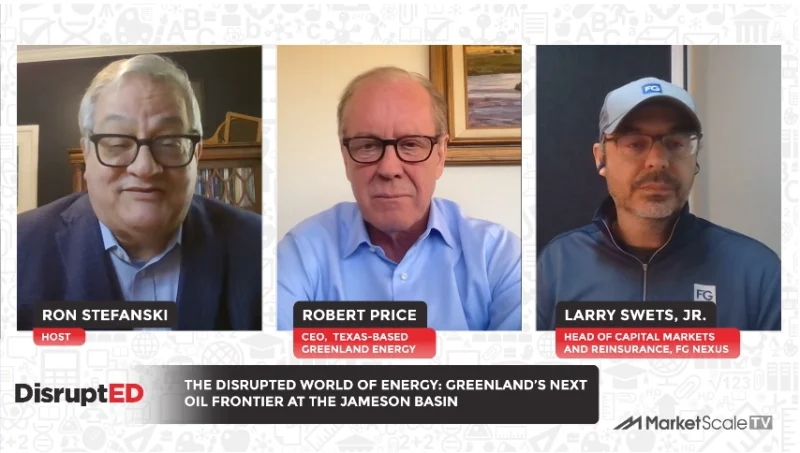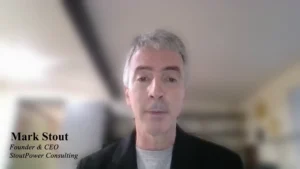Aramco’s Al-Khowaiter on Blue Hydrogen Investments
Saudi Aramco has outlined plans to invest in blue hydrogen as the world shifts away from the dirtier forms of energy, but it says that it will take at least until the end of this decade before a global market for the fuel is developed. Hydrogen is seen as crucial to slowing climate change the thinking is that it emits no harmful greenhouse gases when it’s burned. Watch below as Ahmad Al-Khowaiter, Saudi Aramco CTO, further discusses his company’s aim for clean energy by 2030.
Al-Khowaiter: Blue ammonia, of course, is just basically taking regular ammonia and capturing the CO2 and sequestering that, so the challenge for the supply is not really a big challenge in terms of conventional investment for oil and gas. Really, the challenge is the demand. And so we will see those investments happen when the demand appears for blue ammonia and for other low carbon hydrogen. So that’s really the challenge. And I would say that it’s, you know, looking at the markets today and the predictions that we’ve seen forecast it’s going to happen. The scale up isn’t going to happen before 2030. We’re not going to see large volumes of the blue ammonia, before 2030. And that’s based on the projections of both the hydrogen council and the International Energy Agency.
Host: There is quite a bit of a lack of clarity around how much of an investment is needed to get this up the scale and how big Aramco’s ambitions are going to be in this space.
Al-Khowaiter: So I can give you an idea of investments based on what we’ve seen in the market. And what we understand of our own business. So, for example, you know, you’ve seen the green ammonia project announced. They announced a $4 billion renewable project to supply hydrogen. This is public knowledge. So that’s about $4 billion for about a million tons of ammonia. And that’s without the electrolyzers and other equipment. So roughly a $4 billion for about a million tons of ammonia, which is equivalent to about 12,000 to 15,000 barrels a day of oil. So that’s the kind of energy we’re talking about, investment around this decarbonized energy source that we’re calling ammonia or hydrogen, green ammonia. Blue ammonia projects are similar to natural gas projects, but with the addition of the carbon capture sequestration part and that carbon capture sequestration part ranges, you know, around a $1 Billion for every ton of ammonia. That’s kind of. So it’s about a fifth of the investment of green ammonia capitalized. This is kind of high level numbers, but it gives you a feeling for what’s the difference in capital cost between the blue ammonia projects that we would be looking at. And some of the green ammonia projects that are being announced around the world.
Hosy: So there’s no clear frame yet for those exports in terms of when we could get ramped up and how soon you could get some traction on that.
Al-Khowaiter: So initially, you really need to have this is very similar to the LNG industry, how the LNG industry works. We believe it’s going to work similarly for ammonia. So, you know, the LNG industry really establishes agreements, first offtake agreements and then makes capital investment. So you’re talking about, you know, from the time you get a clear offtake scale and agreements, commercial agreements, you’re talking about a five to six year capital cycle to invest in equipment that’s in the production and conversion requirement. So you’re talking a pretty long time scale, about six, seven years for blue, for large scale blue, blue hydrogen, blue ammonia to take off. That’s why I said, we don’t see this happening at scale before 2030.
Host: In terms of what Aramco is doing broadly. So we’re seeing energy companies there trying to reduce their carbon footprint. And clearly, Aramco is experimenting with new ideas. I’m wondering whether solar or wind plans in Saudi or international are on the table at all.
Al-Khowaiter: We are evaluating all options to reduce emissions and basically provide sustainable energy. And so we look at we are experimenting. And we have actually developed a number of renewables projects within our own business. And we are looking at the use of renewables and increasing the use of renewables in our business. But it’ll have to be competitive economically. And renewables are up to a point quite competitive today.
Host: Why is Aramco not getting involved with green hydrogen and only with blue hydrogen if you are open to all these other ideas?
Al-Khowaiter: We never ruled out any type of we don’t even like the term green or blue. We prefer low carbon hydrogen, because really to us it’s the economics. And if we can integrate, in fact, we’re very excited about potential integration of green, and blue. We see a lot of synergies in terms of both the transport of hydrogen doesn’t really care what the color is. And the final use doesn’t care either. So we’re really excited about integrating. Actually, we think we have a huge advantage in the kingdom with the low cost green hydrogen. So there’s some synergies that we are exploring and we have actually some research on those synergies.
*Bloomberg contributed to this content
—
Follow us on social media for the latest updates in B2B!
Twitter – @MarketScale
Facebook – facebook.com/marketscale
LinkedIn – linkedin.com/company/marketscale









